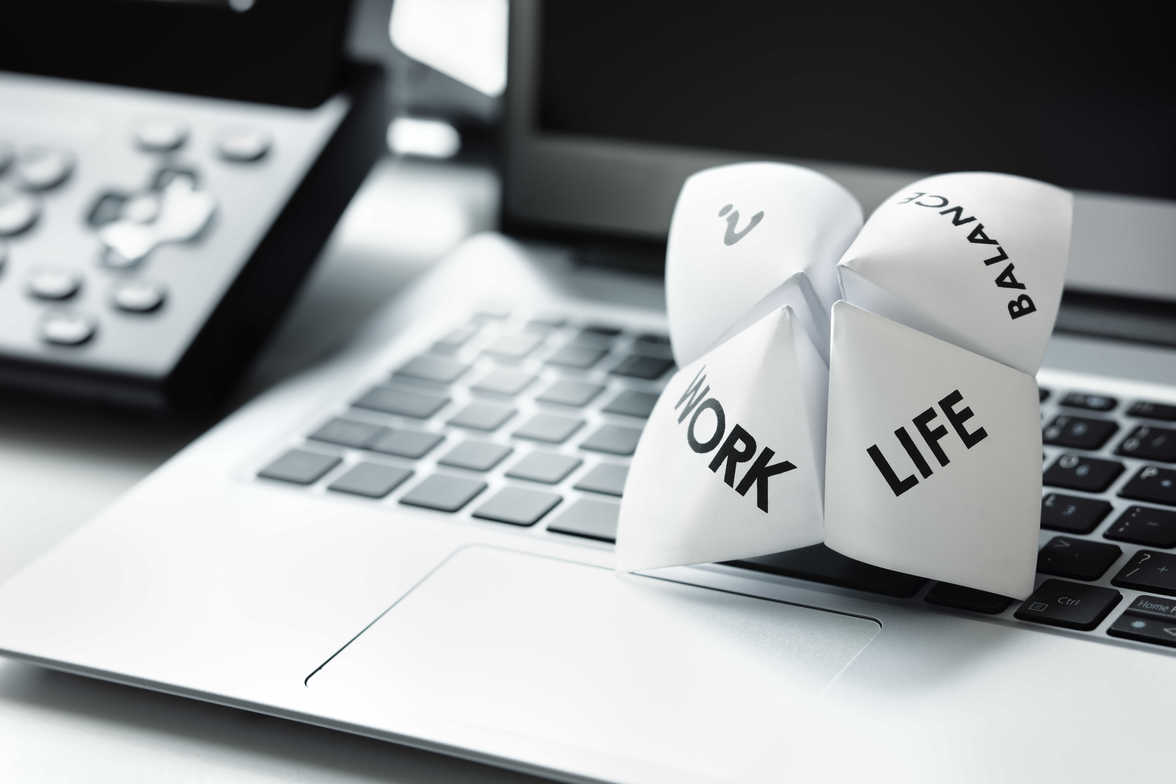
Workplace burnout is so prevalent that in 2019 the World Health Organization (WHO) added it to the 11th Revision of the International Classification of Diseases as an “occupational phenomenon.” [1] The pandemic including the need to work from home has worsened burnout for some workers and caused others to develop the problem. A survey about workplace factors that can lead to burnout demonstrated how the pandemic is negatively impacting workers. It revealed that 51% of respondents were working more than their contracted hours, 32% were closer to burnout because of the lockdown, and 27% were having a more difficult time due to a lack of social interaction.[2] Workplace burnout can be a debilitating and daunting experience, but there are actions we can take to prevent, cope with, and overcome this syndrome.
Workplace Burnout and Its Adverse Effects on Well-being
Burnout occurs when persistent stress causes emotional, mental, and physical exhaustion that makes it hard to meet continuous work demands.[3] According to the WHO, workplace burnout has three primary characteristics:[4]
· Energy depletion
· Decreased productivity
· Mental distance from the job or negative feelings about it
Causes of Workplace Burnout
Many occupational, organizational, personal, and social factors can cause employees to burn out.
Traditional causes of workplace burnout[5]
· Dealing with overly demanding or unclear expectations
· Having a lack of control over one’s work
· Performing unchallenging or monotonous duties
· Receiving little or no recognition for good work
· Working in high-pressure or chaotic environments
Pandemic-related causes of workplace burnout[6] [7]
· Fear about job security
· Increased anxiety
· Isolation and loneliness
· Lack of control
· Lockdown fatigue
· No separation between work and home
· Unmanageable workloads
Lifestyle factors that contribute to workplace burnout[8]
· Working too much and not spending enough time relaxing and socializing
· Lacking close and supportive relationships
· Having too many responsibilities
· Sleeping poorly or not enough
Personality traits that contribute to workplace burnout[9]
· Being overly ambitious and competitive
· Having a pessimistic view of one’s self and the world
· Needing to be in control
· Seeking perfection
· Unwillingness to delegate to others
Signs and Symptoms of Workplace Burnout
The early signs and symptoms of burnout can go unnoticed. This is why it’s important to closely monitor your stress level and identify subtle signs of the condition.[10]
Physical signs and symptoms
· A change in appetite or sleep habits
· Feeling depleted most of the time
· Frequent illnesses due to lowered immunity
· Headaches or muscle pain
Emotional signs and symptoms
· Cynicism
· Decreased sense of accomplishment
· Dissatisfaction
· Feeling alone in the world
· Feeling defeated, helpless, or trapped
· Loss of motivation
· Self-doubt
· Sense of failure
Behavioural signs and symptoms
· Getting to work late and leaving early
· Isolating from others
· Lashing out at others when frustrated
· Procrastinating
· Skipping work
· Using alcohol, drugs, or food to cope
· Withdrawing from responsibilities
Long-term Consequences of Workplace Burnout
If left untreated, workplace burnout could have long-term physical, psychological, and occupational consequences.[11]
Physical consequences
· Changes in pain experiences
· Coronary heart disease
· Gastrointestinal problems
· High blood pressure
· High cholesterol
· Hospitalization because of cardiovascular disorder
· Mortality below age 45
· Musculoskeletal pain
· Prolonged fatigue
· Respiratory problems
· Serious injury
· Type 2 diabetes
Psychological consequences
· Depression
· Hospitalization for mental disorders
· Persistent insomnia
· Symptoms of mental distress (e.g., decreased functioning, illogical thinking, increased sensitivity, nervousness, peculiar behaviour, and problems thinking)[12]
· Use of antidepressants and/or other psychotropic medications
Occupational consequences
· Long-term sick leave
· Job loss or permanent exclusion from the labour market
· Low performance that increases emotional exhaustion
· Presenteeism
Taking Action to Manage Workplace Burnout
Recovering from workplace burnout can be difficult because it isn’t likely that you can eliminate every work stressor or other stressors that can contribute to burnout. But you can do things to cope with burnout including managing stress, creating an efficient work from home routine, and seeking help from a therapist or counsellor.
Action 1: Manage Stress
Practising acceptance, forgiving ourselves, and taking good care of ourselves are three steps we can take to manage our stress.
Practice acceptance.
Life is full of events, experiences, and situations we can’t change. For example, some people are understandably finding it difficult to work from home, but we can’t change the fact that Covid-19 has made it necessary to limit contact with others. Acknowledging that you have no control over a situation and minimizing resentment and rumination about it can help you calm down and find constructive ways to deal with it.
Forgive yourself.
We all make mistakes, have bad days, and fail to achieve goals but beating up on ourselves for being imperfect can increase our stress levels and hurt our self-esteem. Letting go of the anger you feel toward yourself and showing yourself compassion will help you feel freer, stronger, and more at peace.[13]
Take care of yourself.
When we take care of ourselves, we are more capable of managing life’s challenges. Eating healthily, getting proper sleep, and staying active are three things you can do every day to sustain your physical and psychological well-being.[14]
· Eat healthily.
Eating a balanced diet provides the fuel and nutrients we need to manage stress, tackle problems, and create joy in our lives. Four ways to create a health-promoting diet are as follows:
- Consume less artificial foods, carbonated drinks, processed foods, and refined sugars.
- Eat more fruits, lean proteins, vegetables, and whole grains.
- Eat foods that can increase serotonin levels such as a piece of fruit, a small amount of dark chocolate, a hearty vegetable salad, or a bowl of porridge.
- Drink plenty of water to stay hydrated and reduce intake of caffeinated beverages.
- Get proper sleep.
Lack of quality sleep affects our judgment, memory, and mood, which makes it harder to manage stress. If you’re sleeping poorly the following relaxation techniques can help you sleep better.
- Do light yoga or other stretching exercises to help relax your muscles and clear your mind.
- Listen to soothing music.
- Make a to-do list of the things you want to accomplish the next day to minimize distractions.
- Take a warm bath to help your body reach the ideal temperature for sleeping.
· Stay active.
Exercise boosts concentration and alertness, decreases fatigue, and improves cognitive functioning. Feeling more energetic, levelheaded, and sharp can help us solve problems and develop ways to manage ongoing stressors. The following activities are just some of the things you can do to stay active (and even have some fun).[15]
- Bike riding
- Cleaning the house
- Dancing
- Doing yard work
- Hiking
- Hula hooping
- Jogging
- Jumping rope
- Swimming
- Taking brisk walks
- Walking up flights of stairs
- Working out at home
Action 2: Establish an Efficient Work from Home Routine
When working from home, the line between work and home can get blurry. This can create tremendous stress and make it hard to successfully meet the responsibilities of these two important aspects of life. Three ways to establish an efficient and a more satisfying work from home routine are:
· Adhere to a schedule.
· Shift from home to work mode.
· Take breaks.
Adhere to a schedule.
Getting out of bed, walking to your workspace, and starting to work can make it seem like you’re always at work. Creating and adhering to a work schedule—whether you work straight through the day or break your schedule up to handle personal matters—will help you separate home and work life. Also, make time in your schedule to socialize with co-workers (as if you were in the office). This will create a sense of belonging, alleviate isolation and loneliness, and provide support and camaraderie. Once you’ve created your schedule, tell your boss and co-workers and let them know the times you’ll check in.[16]
Shift from home to work mode.
Shifting from home to work mode will help you get into the work mindset. Two ways to get into work mode are: [17]
· Get dressed like you would do if you were going to your workplace.
· Do something physical to indicate that it’s work time (e.g., lighting a candle and putting it on your desk, making a cup of tea, reading a business article, or taking a walk). The key is to perform this ritual every day to establish a strong association with work.
Take breaks.
Taking breaks helps to alleviate monotony, decrease stress, and improve performance.[18] Some ideas about how to spend your breaks are listed below.
· Exercise
· Get some fresh air
· Listen to music
· Meditate
· Read a book
· Sit quietly
· Write in a journal
Action 3: Seek Help from a Therapist or Counsellor
A therapist or counsellor can help you identify work stressors and develop ways to manage them. He or she can also help you work through other pandemic-related issues and heal from any long-standing mental health and quality of life issues.[19]
You Can Conquer Workplace Burnout
If you’re suffering from workplace burnout or suspect that you are, now is the time to start recovering from this life-depleting condition. It can be hard to take action when you’re feeling exhausted and distressed but taking that first step—like contacting a therapist or counsellor—will in time lead to rejuvenation and increased well-being. At Life Counsel, we provide a safe and welcoming place for you to talk about what you’re going through and find solutions to your problems.
[1] “Burn-out an ‘Occupational Phenomenon’: International Classification of Diseases,” World Health Organization, accessed April 1, 2021, https://www.who.int/news/item/28-05-2019-burn-out-an-occupational-phenomenon-international-classification-of-diseases.[2] “UK Survey Explores Worker Burnout During COVID-19 Pandemic,” Safety and Health Magazine, accessed April 4, 2021, https://www.safetyandhealthmagazine.com/articles/20475-uk-survey-explores-worker-burnout-during-covid-19-pandemic.
[3] Liggy Webb, “Burnout: How to Avoid It and Look After Yourself,” NHS, accessed April 1, 2021, https://www.workingwellglos.nhs.uk/wp-content/uploads/2019/01/Burnout-how-to-avoid-it.pdf.
[4] “Burn-out an "Occupational Phenomenon.”
[5] Melinda Smith, Jeanne Segal, and Lawrence Robinson, “Burnout Prevention and Treatment,” Help Guide, accessed April 1, 2021, https://www.helpguide.org/articles/stress/burnout-prevention-and-recovery.htm.
[6] Mark Royal and Val Olson, “COVID-19 Burnout: Four Ways to Deal with It,” Korn Ferry, accessed April 2, 2021, https://www.kornferry.com/insights/articles/coronavirus-burnout-four-ways-to-handle.
[7] Alex Christian, “Companies Are Finally Starting to Take Staff Burnout Seriously,” Wired, accessed April 2, 2021,https://www.wired.co.uk/article/burnout-workplace-coronavirus.
[8] Smith, “Burnout Prevention.”
[9] Smith, “Burnout Prevention.”
[10] Smith, “Burnout Prevention.”
[11] Denise Albieri Jodas Salvagioni, Francine Nesello Melanda, Arthur Eumann Mesas, Alberto Durán González, Flávia Lopes Gabani, and Selma Maffei de Andrade, “Physical, Psychological and Occupational Consequences of Job Burnout: A Systematic Review of Prospective Studies,” PloS ONE, 12, no. 10 (2017): https://doi.org/10.1371/journal.pone.018578.
[12] “Warning Signs of Mental Illness,” American Psychiatric Association, accessed April 3, 2021, https://www.psychiatry.org/patients-families/warning-signs-of-mental-illness.
[13] “How to Manage Stress,” Mind, accessed April 4, 2021, https://www.mind.org.uk/media-a/4667/how-to-manage-stress_2015.pdf.
[14] Webb, “Burnout: How to Avoid.”
[15] “30 Fun Ways to Get 30 Minutes of Physical Activity Today,” The Queensland Government, accessed April 4, 2021, https://www.health.qld.gov.au/news-events/news/30-ways-to-get-active-exercise-fun.
[16] Royal, “COVID-19 Burnout.”
[17] Sophie Gallagher, “Coronavirus: How to Maintain Productivity After Working from Home for Six Months: Distinguishing Between Work and Home Mode Is Essential,” The Independent, accessed April 4, 2021, https://www.independent.co.uk/life-style/health-and-families/coronavirus-working-from-home-tips-outbreak-how-to-a9374806.html.
[18] Sarah Vohra, “Battling Burnout,” The Office Group, accessed April 4, 2020,https://www.theofficegroup.com/stories/future-of-work/battling-burnout.
[19] Cindy Lamothe, “How to Keep Work Stress from Taking Over Your Life,” Heathline, accessed April 4, 2021, https://www.healthline.com/health/work-stress#seek-help.

Stathi Anthopoulos
Contact Me



